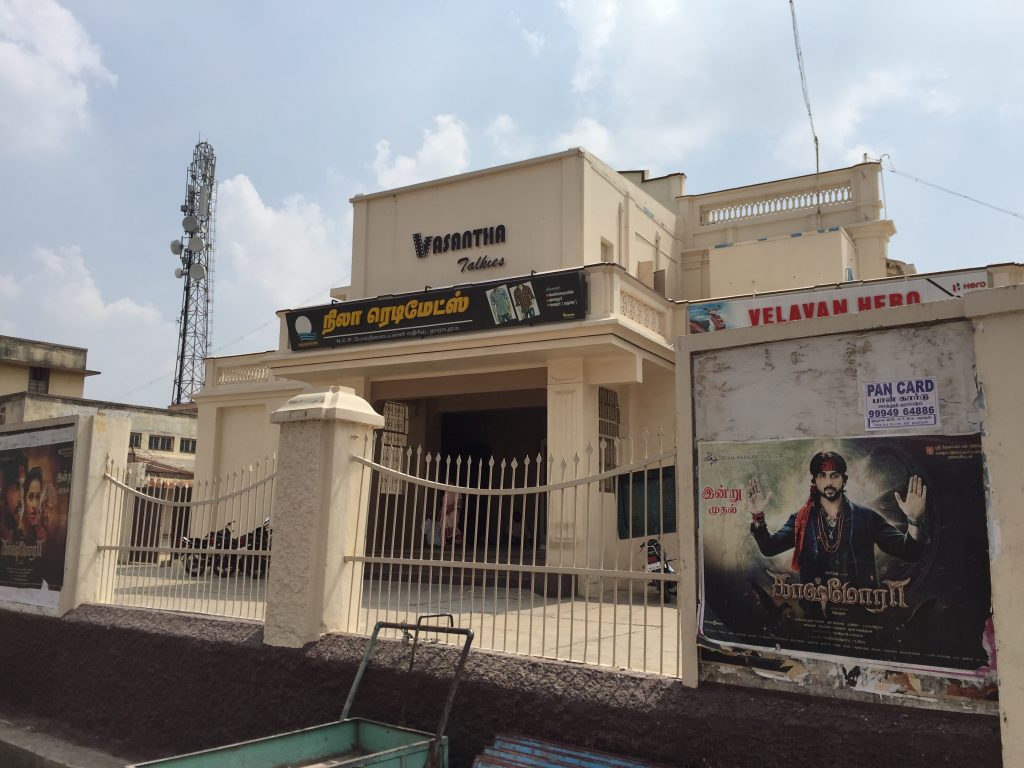Vasantha Talkies was the cultural hub of that little town of Dharapuram in Tamil Nadu, where I grew up. This cinema house had come in 1927 itself, during the silent era. Even in the mid-forties, it had double projectors and a huge diesel generator. One of my early memories of a film I saw in this place was Theivaneedhi in 1947. On the front wall of the talkies was a large plain space, like a writing board. On this was displayed an advertisement about the film that was running. Passersby would know what film was on.
Saravanan, who was working as an odd job man in Vasantha Talkies, was the artiste and I have often watched him at work. He would cut out the figures from wall posters and create a collage on this wall space. Then he would embellish the work with a brush. He would have the advertisement from a magazine or the cinema song book on one hand and the brush on the other and go to work. Most of his work was cut and paste work or an enlargement of the published advertisement. For some reason the words he wrote around the collage were mostly in blue colour. I suspect Saravanan used the blue used to give a shine to white clothes while washing them. On the last day of the film to alert the regular audience of the area who came to the cinema house, two bold words would appear inre kadaisi meaning Last show today. When there were special shows on festival days, the timing would be announced on this space. On Sivarathiri day, there will be shows throughout the night. When we saw Saravanan at work here, that would mean a change in the film and there was always be a small crowd around him to learn about the coming film.
These posters had their own iconography. They followed the compositional conventions of the advertisements for films that appeared in magazines. Poster artistes, like Saravanan all over Tamil Nadu modelled their works on Madhavan and Balu Brothers who were working as poster artistes in Chennai and whose works were published in film magazines as advertisements, the largest depiction was that of the hero and the next was the leading lady. Then in smaller size came the villain and the comedian. In the hoardings or wall drawings, on either side of the picture, the actors’ names would be featured, one below the other. The names of directors, script writers or music director did not appear in the posters in the early years. There were to come later. The name of the dialogue writer, in particular, was credited in the posters after the Dravidian movement when writers like Annadurai and Karunanidhi came into the movies.
In small towns, a bullock-cart, with hoardings on either side was used for publicity. A drummer would sit inside and another would distribute the handbills. This sound of the drum would attract kids and they would run behind the cinema vandi asking for handbills. The handbills, in addition to the timing of the shows, would feature the credits and often a précis of the story. Though rare to come across now, these are precious sources of film history. These two hoardings on the cart were also the work of Saravanan.
Vasantha Talkies continues to entertain the people in and around Dharapuram. The painted posters may have been replaced by the digital ones and maybe there are no more Saravanans or kids running behind bullock-carts to grab the handbills. But someone somewhere must be carrying the memories of those days like I do. Those memories are also very much a part of film history.


